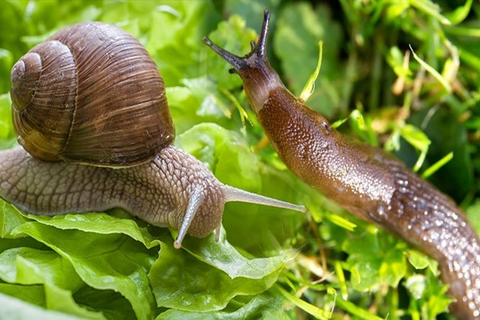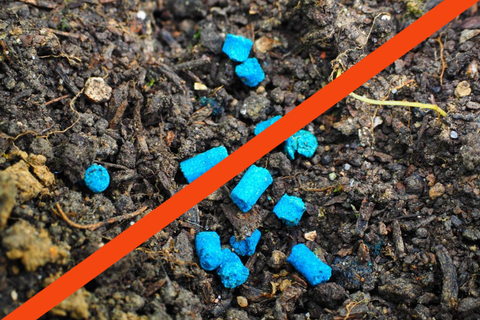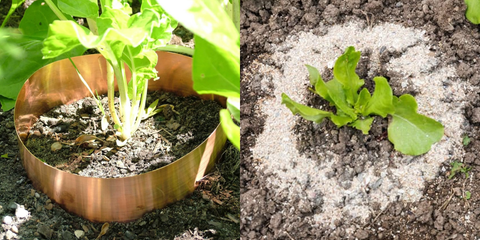Making Short Work Of Slugs & Snails
Slugs and snails, which eat young plants in the dark and move slowly through gardens, are the torment of many gardeners' existences. It's not uncommon to discover an entire row of seedlings killed in one go, and even one snail can wreak havoc. Given this, it should come as no surprise that many gardeners grow to dislike our molluscan companions and will do practically anything to get rid of the invertebrate scourge from their gardens.

Historically, pellets containing toxins that would kill the animals after ingestion were used to solve the snail and slug problem. This is a less than ideal approach for a variety of reasons, including the fact that the pellets can be extremely harmful to children, animals, and even wildlife. The slugs and snails can become deadly to birds before they die, which is terrible news for any of our feathered friends that decide to nibble on a slug. Additionally, the pellets themselves have the potential to be toxic.

Recently, organic slug pellets that do not contain toxins have become available, although it is unclear how successful they are as they still involve using chemicals, which many people in today's environmentally concerned society would prefer to avoid.

Click here to buy Vitax Slug Gone products or browse others like it.
Creating an environment that is adverse to slugs while being alluring to their natural predators, such as birds, hedgehogs, and toads, is the most environmentally friendly strategy to combat them. Reduce the severity of the steps you need to take yourself by luring these creatures to your yard where they will do a great job of feasting themselves on the neighbourhood snail population. Additionally, slugs and snails like to spend the day in chilly, damp, and dark areas, such as untidy flowerbeds and unmowed grass. By eliminating these hiding places, you can reduce the likelihood that a slug will try to escape a predator.
Even if you make an effort to keep your neighbourhood mollusks out of your garden, their attraction to the succulent young seedlings will undoubtedly be stronger. By erecting a barrier around specific plants, you may safeguard them. Popular materials include jagged grit or broken eggshells, which slugs and snails find difficult to move over, or a vaseline smear applied to the top of a plant pot, which functions similarly. A very powerful deterrent is available in the form of copper rings, bands, or even tape that delivers a tiny electric shock to any snail that tries to cross it.

There are slug traps you can buy that you fill with a seductive liquid, like beer, and half-bury in the earth. The plan is for the slugs to crawl towards it and then drown as they do so (or die of alcoholic poisoning, possibly). The disadvantage of these traps is that they squander excellent beer, and if the catch is good, cleaning them out every morning is not fun!
A nighttime slug hunt is a far more affordable choice, but it can get you some notoriety in the neighbourhood. When the slugs are most active and damaging after dark, patrol your garden with a torch, a bucket, and a slug-killing tool. Although you generally won't want to practise this exercise too frequently, it works especially well when it's raining.
We also stock a selection pest control products for all kinds of critters, from top brands like Vitax and Provanto.
Click here to check them out!